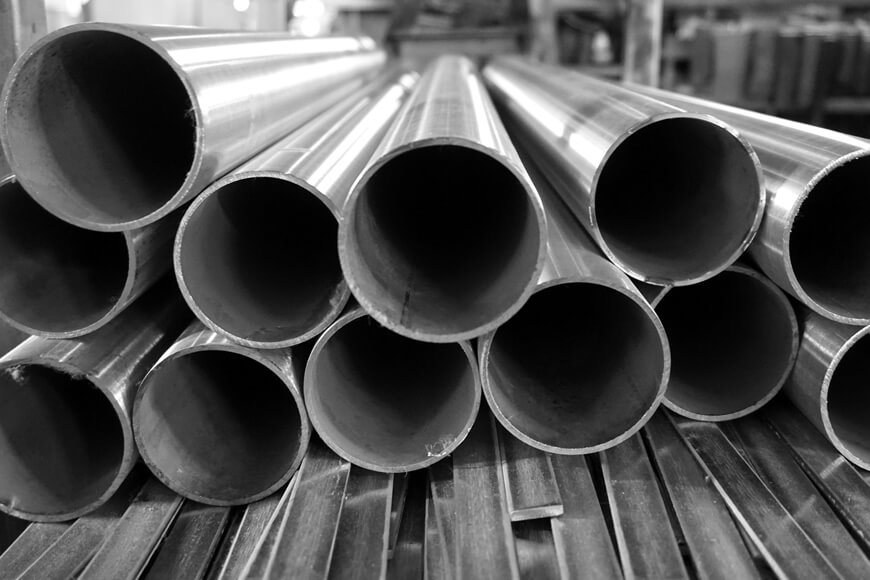You would think that stainless steel doesn’t stain based on its name, but you’d be wrong.
Although it is less susceptible to stains than other iron-based metals, stainless steel is not truly “stainless”. Stainless steel can develop fingerprint and grease stains, discoloration, and finally rust much like regular steel. Resilience makes a difference. Stainless steel can endure more use and abuse before beginning to corrode.
What is Stainless Steel?
Although stainless steel also contains a fair amount of chromium, the alloy that gives stainless steel its renowned corrosion resistance, all steels share the same basic iron and carbon composition.
Stainless steel comes in a variety of grades, each with slightly different alloy composition and thus somewhat varied physical properties.
Chromium must make up at least 10.5% of stainless steel. It may have substantially higher chromium concentrations, as well as additional alloying elements including molybdenum, nickel, titanium, aluminum, copper, nitrogen, phosphorus, or selenium, depending on the grade.
Common Stainless Steel
The two most widely used grades of stainless steel are 304 and 316. The main distinction is the use of molybdenum, an alloy that significantly improves corrosion resistance, particularly in areas with higher salinity or chloride exposure.
Molybdenum is a component of stainless steel 316. Not 304 stainless steel.
Stainless steel is a great corrosion-resistant material for outdoor furniture like rails and bollards, but it will only last for a long time if the grade is right for the environment. 304 is inexpensive and useful in most situations, but it can’t handle chlorides as well as 316 can. The slightly higher price of 316 is well worth it in places where chlorides are a big problem, like near the ocean or on roads that are heavily salted. Each use of stainless steel has its own requirements and needs a type of stainless steel that can meet those needs.
Other common consumer stainless steels include 409 and 430.
304 Stainless steel
Because it doesn’t rust and is a good value, 304 stainless steel is the most common type of stainless steel used around the world. It has between 16 and 24% chromium, as well as up to 35% nickel and small amounts of carbon and manganese.
18-8 (18/8) stainless steel, which has 18% chromium and 8% nickel, is the most common type of 304 stainless steel.
Most oxidizing acids will not cause 304 to rust. Because 304 is so strong, it is easy to clean and is therefore perfect for use in the kitchen and with food. It is also often used in buildings, decorations, and furniture.
304 stainless steel does have one weakness: chloride solutions and salty environments like the coast can cause it to rust. Localized corrosion caused by chloride ions is called “pitting.” It can spread under protective chromium barriers and weaken internal structures. With as little as 25 ppm of sodium chloride, solutions can start to eat away at metal.
Common Uses for Stainless Steel 304 Steel
Storage tanks
Fasteners and finishing hardware (screws, nuts, bolts, plates, handles)
Pots and pans
Residential sinks and sink parts
Indoor architectural/decorative hardware (panels, sculptures, sconces)
Equipment tubing
Residential appliances
316 Stainless Steel
The second most common type of stainless steel is 316 grade. It is made up of almost the same materials as 304 stainless steel and has almost the same physical and mechanical properties. The main difference is that 316 stainless steel has between 2% and 3% molybdenum in it. The addition makes the metal less likely to rust, especially when it comes in contact with chlorides and other industrial solvents.
316 stainless steel is often used in industrial settings that involve processing chemicals, as well as in areas with a lot of salt, like coastal areas and places where salt is used to melt ice. Because it doesn’t react with other things, 316 stainless steel is also used to make medical instruments.
Other grades in the 300-series can have up to 7% molybdenum. They are even more resistant to chloride, but this kind of heavy-duty resistance is only needed in industrial settings or places with high concentrations of chloride.
Common Uses for Stainless Steel 316 Steel
Industrial equipment as used in:
Pharmaceutical manufacturing
Chemical manufacturing
Industrial and chemical transportation
Pressure vessels
Cisterns and pipes for chemical applications
Medical equipment where non-surgical steel
Marine equipment
Outdoor site furnishings
Commercial kitchens
Food production and processing in saline environments
Commercial appliances
Natural corrosion resistance
Corrosion happens in the real world. Pure elements always react with what’s around them, which is why you rarely find them in their pure form in nature. Iron is no different.
When iron is wet or humid, it reacts with the oxygen in the water to make rust (iron oxide). The red, flaky oxide breaks down quickly, making more of the metal vulnerable to corrosion. This type of corrosion is very likely to happen to iron and standard carbon steels.
Stainless steel is naturally able to form a layer that keeps it from rusting. What is it?
Chromium
All stainless steels have chromium, which reacts quickly with oxygen, just like iron does. The only difference is that only a very thin layer of chromium will rust (often only a few molecules in thickness). Unlike iron oxide, which is flaky and unstable, chromium oxide is very stable and does not react with anything. It sticks to surfaces made of stainless steel and won’t move or react with other materials. It can also fix itself. If it is broken or taken away, more chromium will react with oxygen to make a new barrier. The faster the barrier repairs itself, the more chromium it has.
Once stainless steel has been oxidized, or “passivized,” it usually rusts at a rate of fewer than 0.002 inches per year. When kept in good shape, stainless steel has smooth, bright surfaces that are great for many building and landscaping designs.
Versatile applications
Nickel is used in both 304 and 316 stainless steel, as well as in other 300-series grades, to keep the austenitic structure at lower temperatures. Austenitic steels have a good balance of strength, workability, and resistance to corrosion. This makes them perfect for outdoor building features, surgical instruments, and food processing equipment.
One of the best things about stainless steel is that it lasts a long time and always looks clean and nice. Stainless steel is easy to care for and clean, so it doesn’t cost much to keep it in good shape.
Contact us if you want to learn more about stainless steel or get a quote for a custom project.
Read More :
All About Mild Steel: Mild steel is a type of carbon steel that has very little carbon in it, Mild steel is not alloy steel, so it contains relatively few elements other than iron, Due to its lower carbon content, mild steel is typically easier to bend, cut, and weld than high carbon steel and other steel.
A Look into the Process of Galvanizing Steel Pipes : Galvanized iron pipes are used for a lot of practical things, like moving water, farming, phone lines, and plumbing. Galvanized iron pipes can be used both inside and outside because they are strong and don’t rust.

